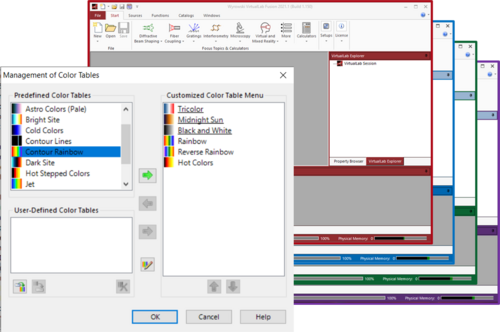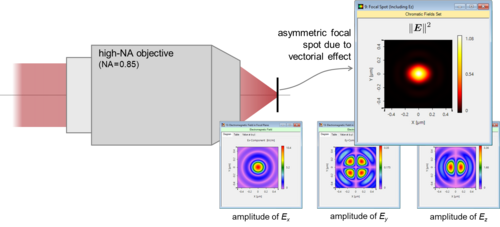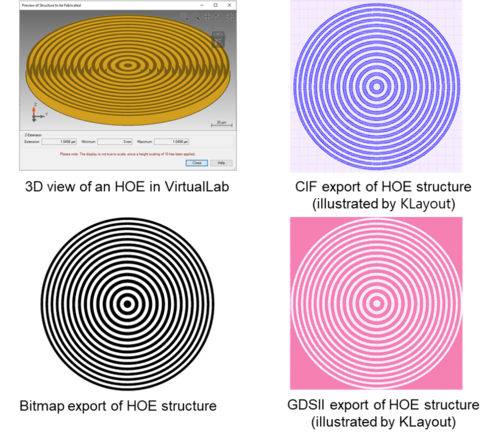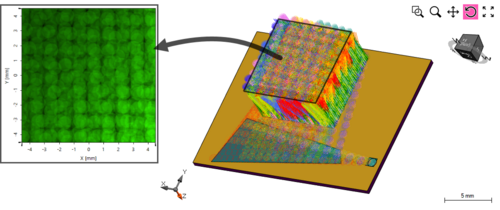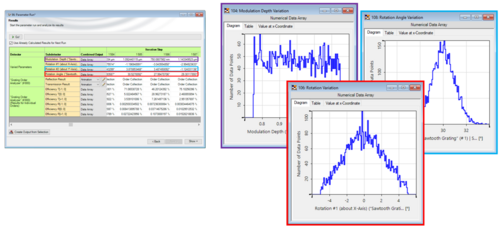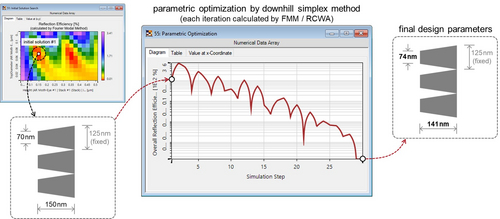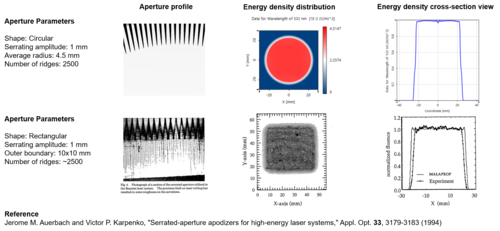What’s new in our Optical Modeling and Design Software?
Personalization through Global Options
To accommodate the variety that naturally exists in personal preferences, as well as to cater to the different specifications of the computing hardware available to each of our users, VirtualLab Fusion provides tools to tailor its configuration to your individual circumstances. Below we demonstrate how to personalize two different groups of settings in the Global Options: on the one hand, those pertaining to the graphic display of data and general visualization; on the other, performance related parameters related to the specifications of the computer which is running VirtualLab Fusion.
Read moreFocal Region Investigation
Lenses are, among all optical components, probably the most widely used, and focusing of light is possibly the most typical task in optics. Although it can seem trivial, the behavior of light in a focal region can be complex and is therefore worthy of in-depth investigation. As an example, in the case of focusing with a high-NA objective lens, the focal spot is known to show asymmetry, and consideration of the vectorial nature of light turns out to be necessary. VirtualLab’s representation of light as an electromagnetic wave in a fully vectorial approach enables the analysis of these polarization-dependent effects in detail. Moreover, the properties of light in the focal region can be thoroughly investigated with the help of different detectors. In combination with the Parameter Run feature the field evolution through the focal region can be analyzed as well.
Read moreFabrication Export
For the design of various optical components, like freeform surfaces, HOEs or DOEs, an important step in the workflow is the export of the generated data for subsequent manufacturing. In the examples below we show that VirtualLab Fusion can export fabrication data for smooth as well as for quantized surfaces in various different data formats, which are commonly used by manufacturing techniques like 3D printing, computer-aided manufacturing or lithographic exposure techniques.
Read moreTake the chance and save your spot for our upcoming Webinar and Online Training in June!
Webinar | AR & MR Devices | 15 June 2021
Online Training | Getting Started | 21 – 22 June 2021 or 23 – 24 June 2021
Meetup | Cross-Topic | 14 July 2021
Cross-platform Optical Modeling and Design (MATLAB & Python)
The modeling and design of modern optical systems, with their increased complexity, can benefit from the combination of multiple software tools. Especially for optimization and data processing a single software package often cannot provide all the necessary functionalities in all fields of interest. The batch mode of VirtualLab Fusion, when used alongside other software tools, enables precisely this type of cross-platform simulations. As examples, we demonstrate how to use Python and MATLAB to access the field solvers from VirtualLab Fusion, and to perform analysis and optimization tasks on that basis.
Read moreTolerancing with Customized Parameter Run
For a robust investigation of the optical performance of a designed system, it is necessary to take into consideration the manufacturing error which can affect various parameters of the system. For this purpose, VirtualLab Fusion offers a powerful and flexible tool called Parameter Run, which can be customized by the user via a programmable interface to allow for different kinds of random probabilistic distributions to be applied to the varied parameters.
Read moreAnti-Reflective Moth-Eye Structures
Inspired by certain moth and butterfly species, biomimetic moth-eye anti-reflection (AR) structures have been fabricated and used for a wide range of applications. Such structures are typically arrays of truncated cones with dimensions smaller than the wavelength of the light. VirtualLab Fusion provides convenient tools for constructing them, and the rigorous Fourier modal method (FMM) for their analysis. A typical workflow on the analysis and optimization of moth-eye structures is demonstrated.
Read moreModeling Beam Apodizers in VirtualLab Fusion
Beam apodization plays a key role in designing high-energy solid-state systems. Beams with steep edge profiles are more prone to develop diffraction ripples and these diffraction ripples are then intensified in optical systems such as amplifiers which may result in undesired effects such as self-focusing. To alleviate such unwanted effects caused by the diffraction ripples, beam apodizers are employed to produce beam profiles with uniform energy distribution.
Beam apodizers may be fabricated via different techniques, however, due to their constant exposure to intense radiation, they are prone to deteriorate. To address this issue, amplitude-only serrated beam apodizers were suggested by Jerome M. Auerbach and Victor P. Karpenko back in 1994.
In this newsletter, we seek to illustrate VirtualLab Fusion’s capability to model such customized aperture thanks to its highly customizable environment and cross-platform solvers. The results are then compared with that of the literature and are shown that they are in complete agreement with the lab results.
Read more



